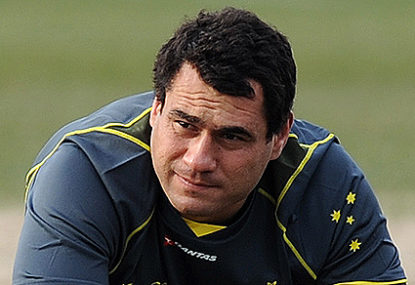Like Greg Martin, I’m rational guy. But no matter how many times I look at it, the dress that broke the internet is white and gold.
It probably says more about the golden glint in my eye that tries to gold plate everything. But you’ve got to when supporting the Wallabies.
It’s why I love Rod Macqueen’s pertinent contribution to the final line of the chorus in the Brumbies team song: “Proud to be Australian with a Brumby on my chest”.
Wallabies first; provincial loyalty second.
So when Marco Caputo tells Andrew Logan that the form of George Smith is so good that he will go close to being named as Top 14 Player of the Year, I get a little excited.
I’m not saying that Smith should get picked in the starting 23 to face England at Twickenham on 3 October 2015; nor am I saying that Smith should be included in the 31-man World Cup Squad. It excites me that he’s performing well enough that he warrants selection to wear that beloved gold jersey and that Australia has depth and competition for positions.
It excites me that Australia has world class options available for selection.
I’m a simple man. I’m easily excited.
Yet myy nearest and dearest confidents tell me that Smith is too old, or he’s not good enough and that, most remarkably, the standard of the Top 14 is not as good as that of Super Rugby so we can’t actually judge how well he is performing.
I judge this particular point of view to be world-class stupidity.
I’m baffled by the mixed enthusiasm to consider selecting players who are performing at their best in Europe.
As a starting point, the Rugby World Cup is going to be held in England and Wales which, as my world map indicates, are on the same continent as France.
This means that European based players are used to the conditions, the grounds and their international standard opponents.
The most ridiculous assertion, however, is that the standard of the Top 14 is sub-par.
Garbage.
The Top 14 is a benchmark for international selection for three of the five countries currently ranked above Australia.
Consider the South Africans. They select players who play in France. In the last Test between Australia and South Africa, Australia lost.
The Irish select players who play in France. In the last Test between Australia and Ireland, Australia lost.
Luckily, the Australians have beaten the Welsh in their last 10 outings.
But of the remaining countries currently ranked below Australia in the Top 10 rugby playing nations in the world, all of whom pick players playing in France, Australia’s winning record is woeful.
The French beat Australia the last time they played.
So did Argentina. And Samoa too.
The Wallabies beat the Scots in 2013, but I won’t forget those two infamous failed attempts in 2009 and 2012.
So if the majority of the players playing for countries that have beaten Australia in the past four years come from a competition where three Australians are currently performing to the highest level, it seems like they could be handy inclusions in the squad.
And I don’t think that Matt Giteau’s last Test against Samoa, or his penultimate Test against France where ran on from the bench, are any indication as to how well he is playing today. Because that’s the thing about form: it comes as quickly as it goes.
Form isn’t like depositing money into a savings account and then buying a house; it’s not boom and then bust. It doesn’t incrementally increase until it reaches a precipice and then drop off the other side. It’s nothing like a bell curve.
Form is completely unpredictable. Zac Guildford’s came early, Brad Thorn’s has been consistent, Scott Fardy’s came late and Tom Carter’s never came at all.
Radike Samo was 35-years-old when he scored that extraordinary try against the All Blacks in Brisbane. Radike’s form that year was outstanding, which was in total contrast to his performances for the Brumbies in 2005 and 2006.
Ali Williams was also representing generation geriatric in his man of the match performance for Toulon in the European Cup Final over the weekend.
It comes down to a lot of hard work and a lot of luck. It’s got absolutely nothing to do with the standard of the competition and everything to do with the unpredictable and uncontrollable peaks and troughs of form.
I think that Drew Mitchell is a classic example. I didn’t rate his international performances following his debut in 2005, but he kept amassing Test caps and scored a bunch of tries, including seven at the Rugby World Cup in 2007. Then, in 2010, he was dropped from the Wallabies squad after a poor series against England.
I was delighted and I was glad to see that he was put out to pasture.
But his time out in the cold was short lived and, to my disappointment, he was back in the team for the Tri Nations. This started a run of form which, in my humble view, made him one of the best two wingers in the world. He was particularly excellent in the back-to-back Tests in South Africa.
This superb run of form continued in the 2011 Super Rugby season, where he was scoring like Berrick Barnes in a nightclub – but he was also exceptional on the crash ball.
Then Scott Higginbotham put out a stray leg, broke Mitchell’s ankle and there ended his spell as one of the world’s best wingers.
Remarkably, Mitchell returned to the field in 2011, but probably too soon for his own good and he re-injured himself. Mitchell was consistent in 2012 and 2013. But geez that was a great try in the European Cup Final…
Other people probably saw it differently. But it certainly isn’t blue and black.






























































































